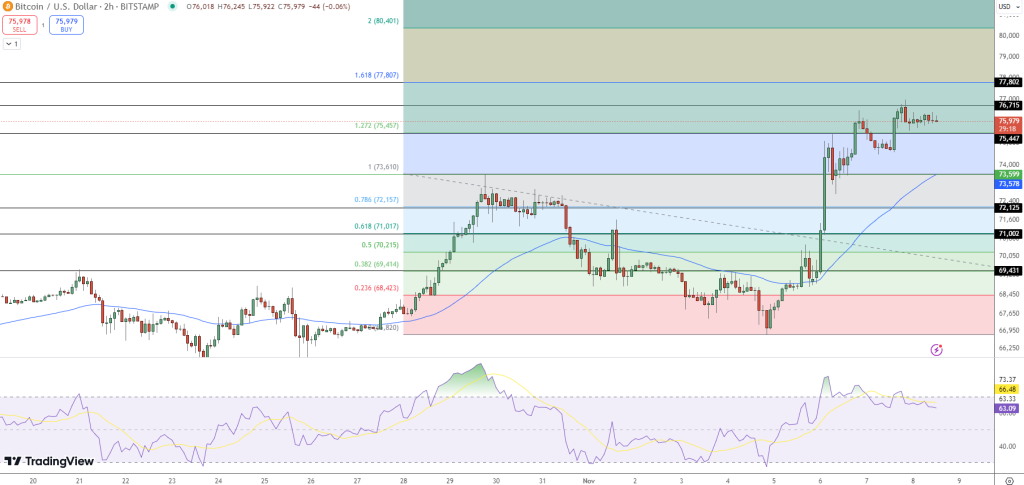Last updated:
 Why Trust Cryptonews
Why Trust Cryptonews

The Bitcoin mining industry is facing a storm of challenges including rising costs, increasing competition, and difficult financial conditions.
A recent Q3 Mining Report published by CoinShares sheds light on the industry’s current state and future outlook.
Bitcoin Production Costs Hit New Highs
One of the primary challenges facing miners is the increasing cost of production. As mining difficulty rises and hash prices decline, the average cost to produce one Bitcoin (BTC) has climbed to $49,500 (compared to $47,200 in Q1).
Although this only includes cash costs. Depreciation and stock based compensation would increase the average cost price estimate to $96,100 per one Bitcoin.
To mitigate these costs, as per the report, miners are turning to energy-efficient strategies such as curtailment and utilizing alternative energy sources. However, some miners are struggling to maintain profitability in this environment.
The second challenge is that the fallout from the FTX collapse and rising interest rates has made it harder for miners to secure funding. As a result, many are turning to “alternative funding sources, often through share issuance.”
However, this comes at a cost, as it can dilute shareholder value. “While this serves as a useful funding option for miners, it has been frustrating for investors due to significant shareholder dilution,” noted CoinShares analysts James Butterfill and Max Shannon in the report.
Bitcoin Miners Face Rising Costs and Stiff Competition
Butterfill and Shannon suggest that Bitcoin’s hashrate will reach 765 EH/s by the end of 2024, up from its current 684 EH/s, and could potentially reach a theoretical upper limit by 2050, reducing carbon emissions from flared gas by 63%. However, hash prices are expected to decline until the next halving event in 2028:
“Hash prices, a measure of potential miner profitability, have also achieved new lows this year, with our forecasting tool we expect them to continue to decline but remain range bound between $50–32/PH/day until the next halving event in 2028.”
Analysts also expect Bitcoin mining to become increasingly competitive, with miners with low costs and efficient operations having a significant advantage:
“Bitcoin mining’s long-term economics will likely face increasing pressure due to ongoing halvings and rising competition from self-miners, corporations, and even nation-states.”
Cormint, a private miner, was the lowest cost producer of Bitcoin with a cost of $16,700 per BTC. TeraWulf followed closely with a cost of $18,700 per Bitcoin, benefiting from fixed-rate power contracts and energy management strategies. The ability of these companies to manage costs effectively will be critical to their long-term success, the report says.
Meanwhile, Riot had the highest cost at $65,900 per Bitcoin. However, Riot earned $13.9 million in power curtailment credits in Q2 2024, which helped lower its net power expenses.
Can Bitcoin Mining Survive the Storm?
The CoinShares report also analyzes how miners are addressing current challenges.
Some Bitcoin miners, such as Riot, Cleanpark and Bitfarms, are taking a two-pronged approach – capital efficiency and diversification – by prioritizing efficient growth and focusing on acquiring pre-built assets rather than building new ones.
Other miners, such as Core Scientific, are venturing into artificial intelligence (AI) infrastructure to stabilize revenues and reduce dependence on the volatile price of Bitcoin.
The analysts concluded that the future of Bitcoin mining depends on effective cost management and capital allocation. Miners with robust strategies will be better positioned to navigate the increasing difficulty of mining and market volatility. The report reads:
“Publicly traded mining companies will need to cut costs and maintain profitability for several reasons: 1) to create value for shareholders, 2) reduce dependency on equity capital markets and create high hurdles for shareholder dilution, and 3) sustain capital expenditure (capex) efforts for future growth.”



